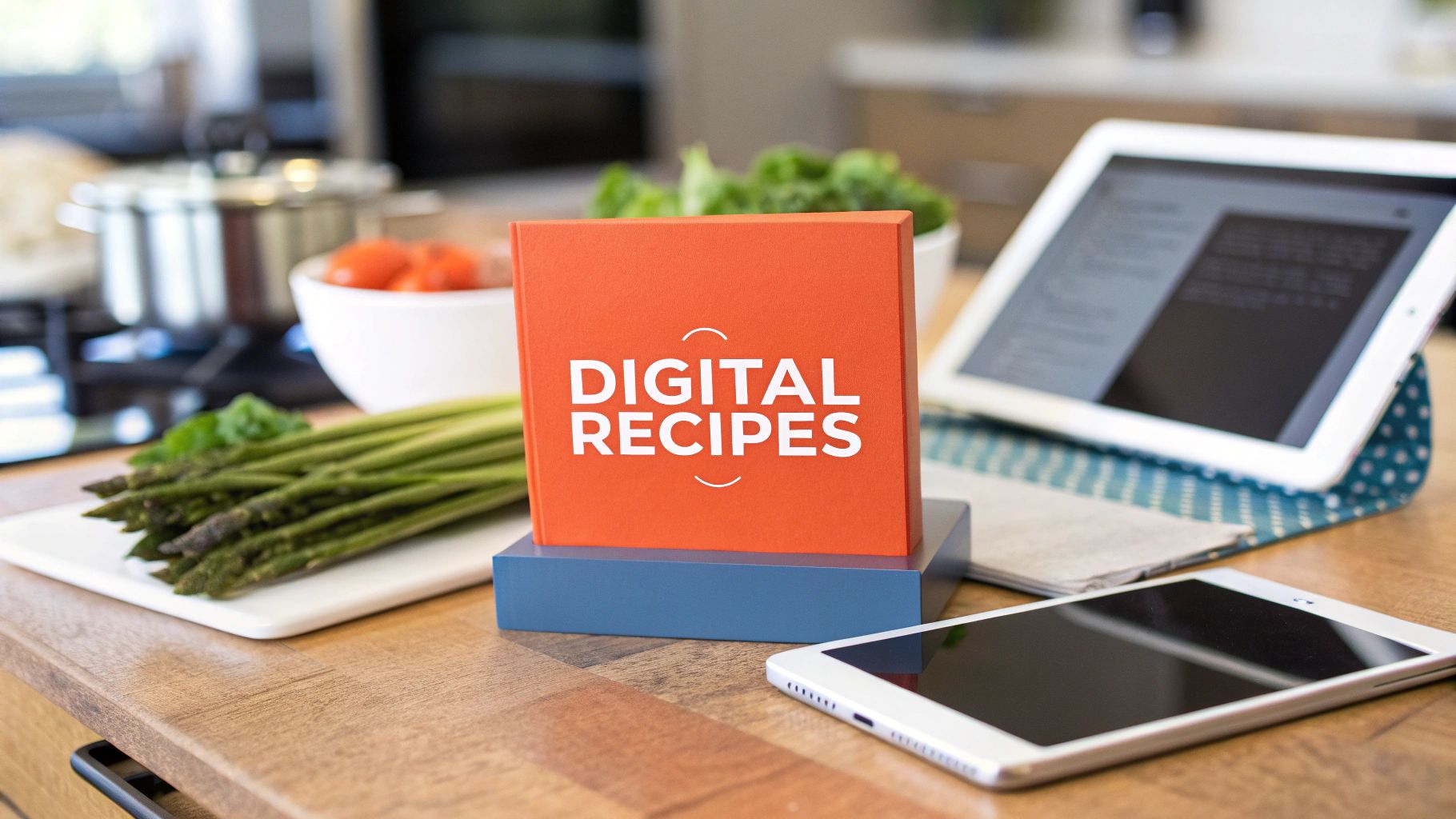Why Traditional Recipe Storage Is Holding You Back
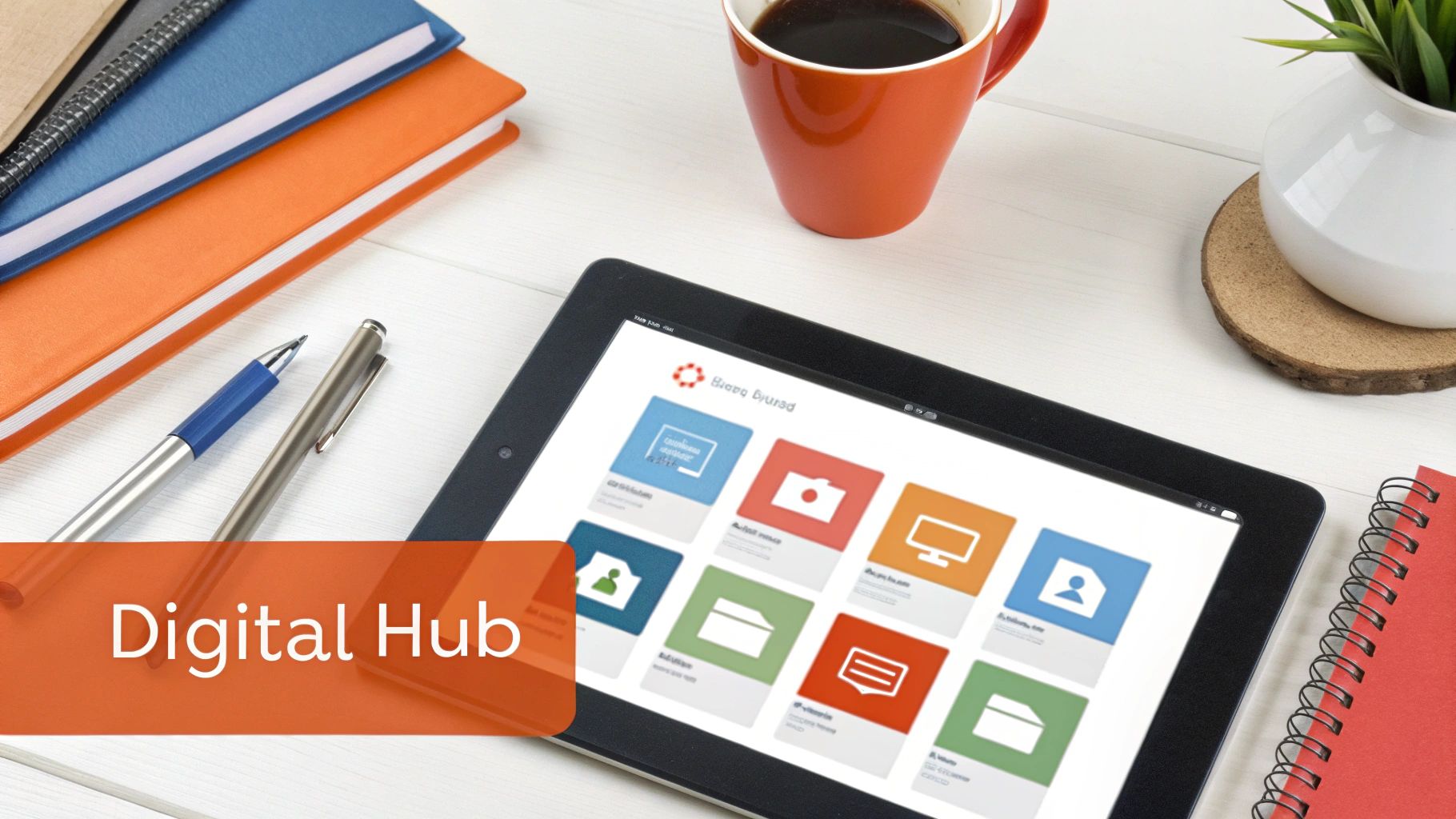
Let's be honest: that overflowing recipe box, the stacks of food magazines, and that endless bookmarks folder aren't helping you in the kitchen anymore. They represent a disorganized system, a relic of the past before streamlined digital solutions. This outdated approach to recipe storage is actually hindering your cooking journey in several key ways, wasting valuable time searching for the perfect dish and turning meal planning into a frustrating chore.
The Downfalls of Disorganization
Think about how much time you spend flipping through cookbooks or scrolling through phone screenshots. That's time you could be spending actually cooking! Traditional methods make it difficult to quickly locate a specific recipe, especially when you're hungry and ready to go.
For example, imagine trying to find your grandmother's famous cookie recipe in a mountain of holiday magazines. The sheer volume of disorganized material can feel overwhelming and ultimately take the joy out of cooking.
Traditional recipe storage also lacks flexibility. You can't easily adjust serving sizes, customize ingredient lists for dietary needs, or quickly search for recipes based on ingredients you have on hand.
This inflexibility often leads to wasted ingredients and unplanned trips to the grocery store. It makes it much harder to adapt to changing circumstances, like unexpected guests or last-minute dietary changes.
However, the shift to digital recipe management is changing how we interact with our recipes. The digital recipe consumption market is experiencing significant growth, projected to reach USD 1,706.30 million by 2031, growing at a CAGR of 15.40%. This demonstrates a clear trend towards embracing digital platforms for cooking inspiration. Explore this topic further here. This growth is fueled by increased smartphone adoption and better internet access, providing instant access to a world of recipes.
The Benefits of Going Digital: A Glimpse into the Future
Switching to a digital recipe organization system isn't just about convenience; it's about taking back control of your kitchen. With a good digital system, you can easily search your entire recipe collection in seconds, scale recipes up or down with a few taps, and even generate automatic shopping lists. Imagine effortlessly planning your weekly meals based on what's already in your pantry!
Digital systems offer powerful features that are simply impossible with traditional methods. Think about the ability to tag recipes by cuisine, dietary restrictions, cooking time, and more. This detailed approach allows you to find exactly what you're looking for, even when you don't know exactly what you want. The opportunity to transform your cooking experience is at your fingertips.
Game-Changing Recipe Management Systems Worth Your Time
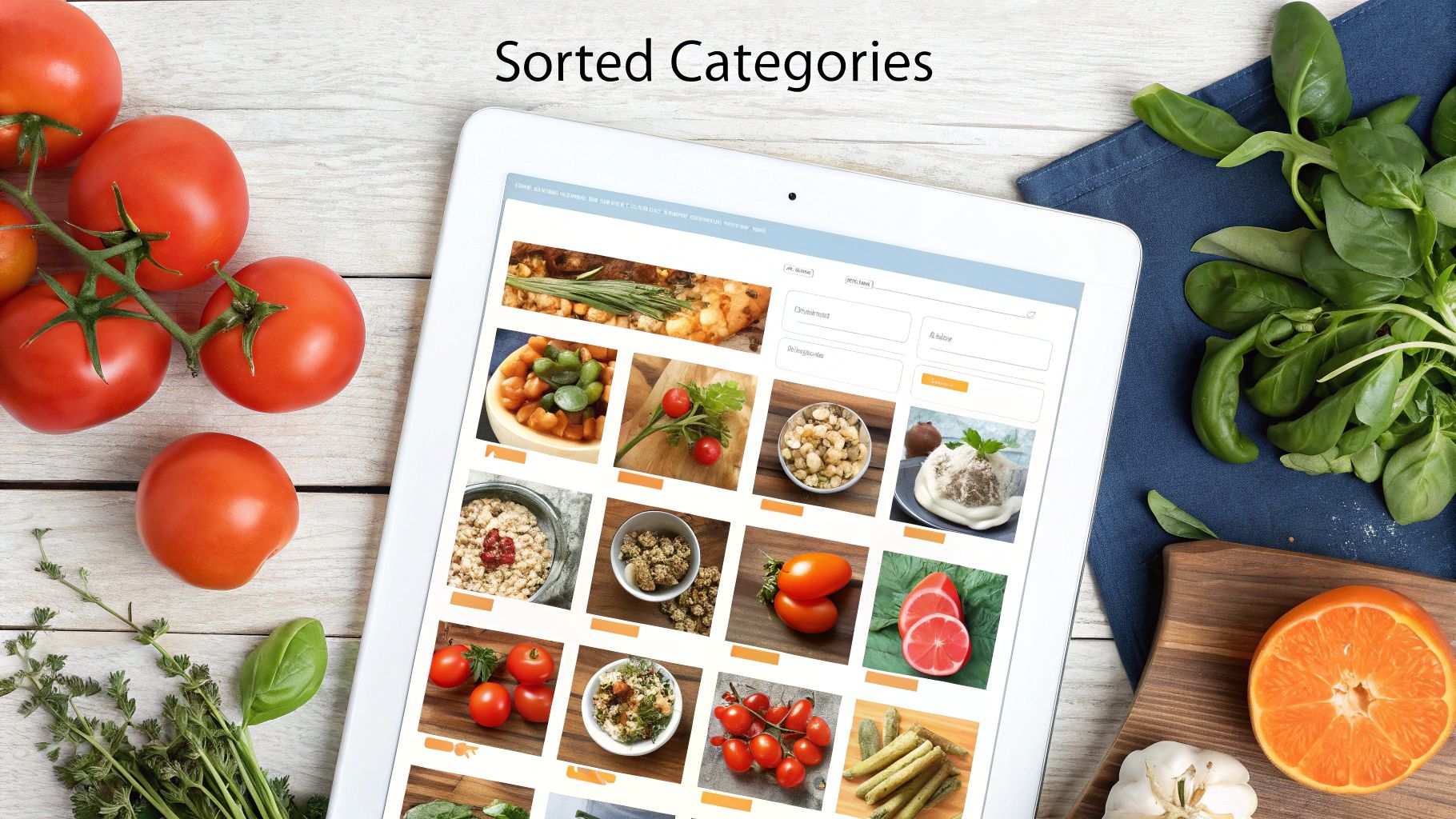
Ready to ditch the scattered recipe chaos and go digital? Great! Choosing the right system can be tough with so many options. This section helps you navigate the choices and understand what top platforms offer.
Key Features to Consider
Before diving into specific apps, let's review the must-have features of any good recipe management system. These core functions will truly upgrade your cooking experience.
- Recipe Importing: Seamlessly importing recipes from websites, blogs, or even cookbooks is key. Look for web clipping, file uploads, and manual entry.
- Intelligent Categorization: Go beyond basic folders. Look for tagging, custom categories, and smart search to find recipes by ingredient, cuisine, or dietary need.
- Shopping List Generation: This is a game-changer. The system should automatically create shopping lists from your chosen recipes. Bonus if it combines multiple recipes into one list and categorizes by grocery aisle.
- Cross-Platform Syncing: Access your recipes anywhere – phone, tablet, computer. Reliable cloud syncing is essential.
Top Contenders: A Closer Look
Several platforms stand out, each with unique features for different needs. Let's explore some popular choices:
- Paprika: A favorite for serious cooks, known for strong recipe importing and organization. The web clipper easily grabs recipes from almost any website. Paprika
- Whisk: Great for families or shared households, thanks to its collaborative features. Shared shopping lists and meal planning tools simplify weekly cooking. Whisk
- AnyList: Focused on shopping lists, AnyList works well with other recipe systems. Its easy-to-use interface and sharing features make it a popular pick. AnyList
- Recify: This app simplifies saving and organizing online recipes with AI-powered extraction. It creates personalized recipe collections for a smoother cooking experience. Recify
To help you compare these options, here's a handy table:
Top Recipe Management Apps Comparison: Comprehensive comparison of the most popular recipe management applications based on key features and user ratings
| App Name | Core Features | Cloud Storage | Price Range | User Rating | Best For |
|---|---|---|---|---|---|
| Paprika | Recipe import, organization, meal planning | Yes | One-time purchase | 4.5+ stars | Serious cooks, recipe collectors |
| Whisk | Collaborative tools, shopping lists, meal planning | Yes | Free, premium features available | 4.0+ stars | Families, shared households |
| AnyList | Shopping list creation, recipe management | Yes | Free, premium subscription | 4.5+ stars | List makers, collaborative cooking |
| Recify | AI-powered recipe extraction, personalized collections | Yes | Varies by plan | 4.0+ stars | Tech-savvy cooks, online recipe users |
This table provides a quick overview of the key features, pricing, and user ratings for each app. Be sure to check individual app websites for the most up-to-date information.
The need for robust recipe management is growing. The global market, valued at USD 1,624.5 million in 2024, is projected to grow at a CAGR of around 8% to 11.8% between 2024 and 2031. This reflects the increasing demand for efficiency in home and professional kitchens. Find more statistics here.
Choosing the Right System: Factors to Consider
Essential features aside, other factors can influence your choice.
- Your Cooking Style: Meal prepper? Spontaneous cook? Some systems cater to specific styles.
- Budget: Free versions are often available, but premium features may require a subscription. Balance your budget with desired features.
- Technical Skills: Choose a user-friendly interface that matches your tech comfort level.
By weighing these factors and checking out available options, you can pick a system that helps you enjoy cooking more.
Building Your Recipe Organization Framework That Works
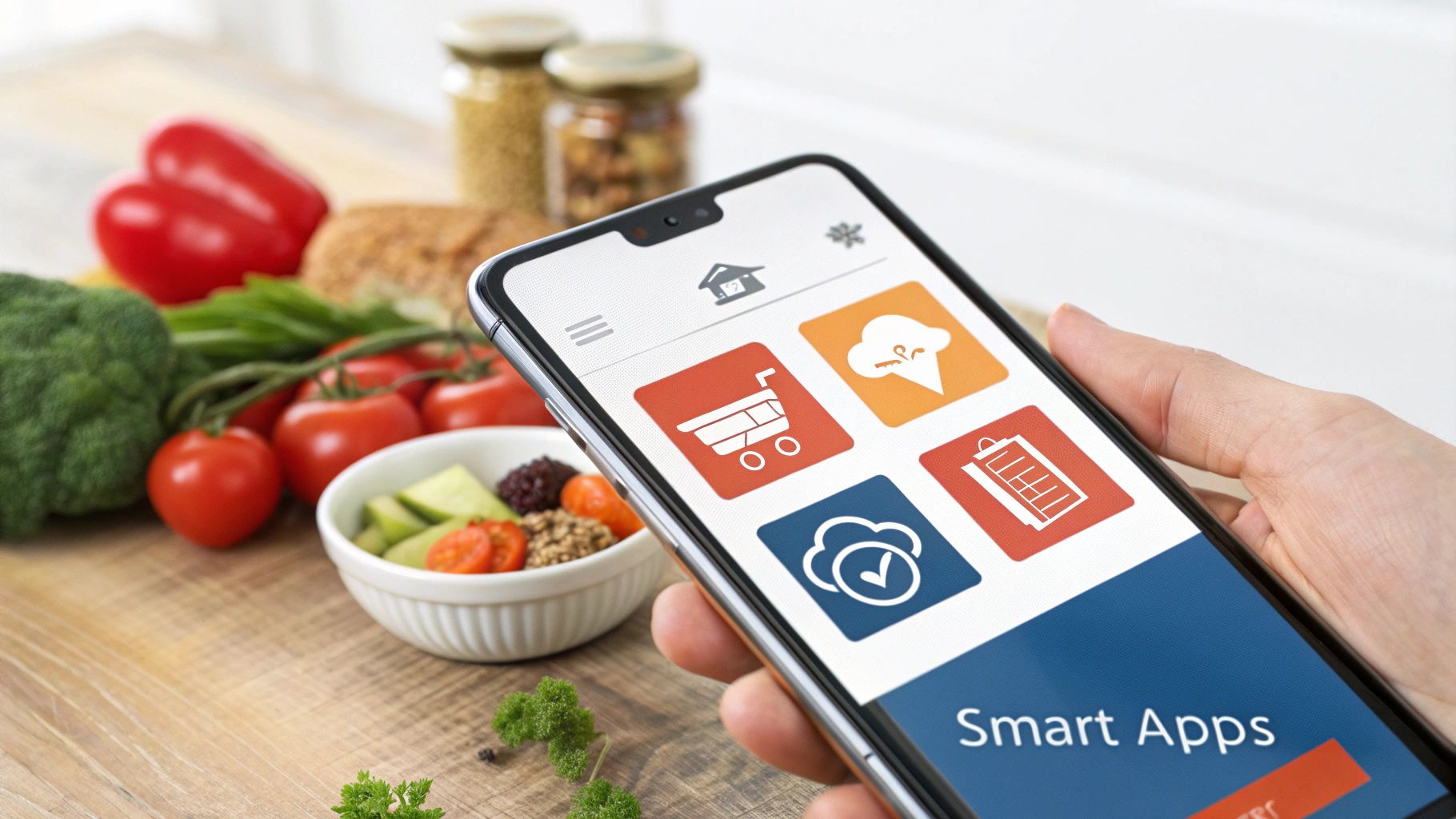
Now that you've explored different recipe management systems, it's time to create a personalized organization framework. This isn't just about downloading an app; it's about designing a system tailored to your cooking habits. Think of it like organizing your dream kitchen—everything placed exactly where you need it.
This section offers practical ways to organize digital recipes, enhancing your overall cooking experience.
Categorization: The Foundation of a Great System
The best way to organize your digital recipes begins with a solid categorization strategy. Start by considering how you naturally think about food. Do you focus on specific cuisines? Perhaps you organize by meal type (breakfast, lunch, dinner). Or maybe dietary needs or key ingredients are your main focus. The key is to choose categories that resonate with your cooking style.
For instance, if you often cook Italian dishes, a dedicated "Italian" category makes perfect sense. You can add categories like "Quick Meals," "Weeknight Dinners," or "Vegetarian" to further refine your organization. This multifaceted approach makes finding recipes easier, especially when you're in a hurry. You might be interested in: How to master online recipe organization.
Tagging: Adding Depth and Flexibility
While categories provide the basic structure, tagging adds a deeper layer of organization. Tags are like keywords that describe your recipes in more detail. For example, a "Chicken Parmesan" recipe could be categorized under "Italian" and tagged with "chicken," "parmesan," "dinner," and "comfort food."
This multi-dimensional approach lets you search your recipe collection using different criteria. This means easily finding all your chicken dishes or all comfort food options across all categories. Tagging provides true flexibility.
To illustrate a structured approach to recipe organization, let's look at the table below. It provides a framework for categorizing recipes using various dimensions, emphasizing the benefits and implementation tips.
Recipe Categorization Framework
| Category Type | Examples | Benefits | Implementation Tips |
|---|---|---|---|
| Cuisine | Italian, Mexican, Indian | Easily find recipes from a specific region | Be specific (e.g., "Thai" instead of "Asian") |
| Meal Type | Breakfast, Lunch, Dinner, Snacks | Quickly locate recipes for a specific time of day | Consider subcategories (e.g., "Weeknight Dinners") |
| Dietary Restrictions | Vegetarian, Vegan, Gluten-Free | Filter out recipes based on dietary needs | Use clear and consistent tags |
| Key Ingredient | Chicken, Beef, Pasta | Find recipes featuring a specific ingredient | Tag all main ingredients |
| Cooking Method | Grilling, Baking, Slow Cooker | Locate recipes based on how they're cooked | Be consistent with terminology |
| Occasion | Holidays, Weeknights, Parties | Find recipes appropriate for specific events | Consider subcategories (e.g., "Thanksgiving") |
This framework demonstrates how combining different category types provides a robust and adaptable system for organizing your digital recipes. The implementation tips ensure that your system remains effective as your recipe collection expands.
Maintaining Your System: Tips for Long-Term Success
Creating a system is just the beginning. Maintenance is key for long-term success. Here are a few essential practices:
-
Regularly Review: Schedule time each month to review your categories and tags. As your collection grows, adjustments will be needed.
-
Consistent Tagging: Tag new recipes immediately. This prevents a backlog of untagged recipes.
-
Seasonal Organization: Consider seasonal categories or tags to find recipes suited for specific times of year.
By following these tips, your recipe organization will simplify your cooking process and rekindle your love for cooking.
Pro-Level Recipe Management For Serious Cooks
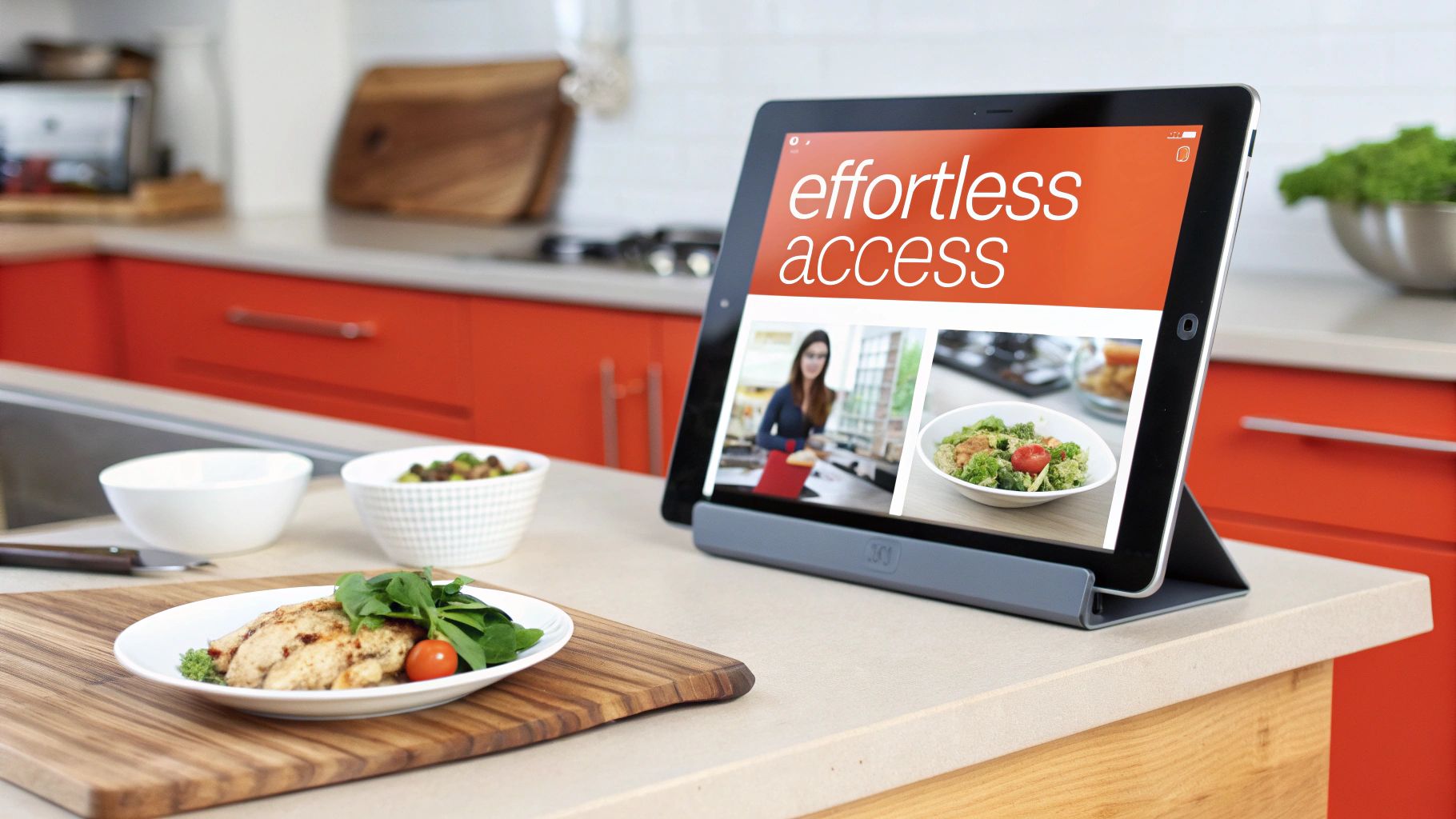
For culinary professionals, organizing digital recipes is more than just personal convenience; it's a critical part of their operations. In the fast-paced world of a professional kitchen, efficiency, consistency, and cost control are essential. This is where professional-grade recipe management comes in, changing the way restaurants, caterers, and food entrepreneurs work. Read also: Our guide to choosing the best recipe management app.
Consistency and Quality Control: The Foundation of Success
Imagine a restaurant serving hundreds of customers every night. Maintaining consistent dish quality across the board is crucial for a good reputation and happy customers. Digital recipe management systems offer a central hub for storing and accessing standardized recipes. This minimizes variations and makes sure every dish meets exact specifications.
This consistency isn't only about taste; it's also about safety. Standardizing ingredients and procedures helps restaurants reduce the risk of errors that can lead to foodborne illnesses. Proper recipe management also helps maintain compliance with food safety rules, providing a record of ingredients, methods, and allergens.
Cost Control and Inventory Management: Optimizing for Profitability
Controlling food costs is key to profitability in the restaurant business. Recipe management software helps chefs accurately calculate ingredient costs, track inventory, and optimize recipes for maximum efficiency. This leads to less food waste, smarter purchasing, and valuable insights into menu profitability.
For instance, a recipe management system can alert a chef to price increases for certain ingredients. This allows them to adjust recipes or find alternatives without affecting quality or consistency. This real-time data empowers chefs to make smart decisions that directly impact profits. Recipe management software is essential for recipe optimization and cost control in the food and beverage industry. These systems centralize operations, offering valuable data on ingredients, processes, and expenses. Key features include automated data collection, version control, ingredient management, and compliance monitoring. Learn more about this topic here.
Collaboration and Team Efficiency: Empowering Your Staff
Effective teamwork is essential in a busy kitchen. Digital recipe management helps chefs, cooks, and other kitchen staff work together seamlessly. Version tracking ensures everyone uses the most current recipe, minimizing confusion and mistakes. This streamlined workflow improves efficiency and communication across the entire culinary team.
Furthermore, these systems often have features for training new hires. New staff can easily access standardized recipes, videos, and other important information. This speeds up onboarding and empowers new team members to contribute quickly.
Protecting Proprietary Recipes: Safeguarding Your Culinary Creations
For many chefs, their recipes are their most valuable assets. Professional recipe management systems offer robust security features to protect these recipes from unauthorized access or sharing. This gives chefs peace of mind when sharing recipes with their team while keeping their creations safe. It combines the advantages of collaboration with the necessary protection of intellectual property.
Creating A Recipe System You'll Actually Stick With
A well-organized digital recipe collection is great, but only if you actually use it. If it's too complicated or time-consuming, you'll abandon it and go back to scattered screenshots and bookmarks. This section explores practical strategies for a sustainable recipe system, one that works for your everyday cooking.
Kitchen-Friendly Practices for Everyday Use
Picture this: you're mid-recipe, hands covered in flour, and need the next step. Fumbling with a phone or laptop is messy. This is where practical solutions come in. A tablet or laptop stand in the kitchen can be a game-changer. Also, consider voice commands or hands-free devices for navigating recipes while your hands are full. Small adjustments can make a big difference in your cooking flow.
Another important factor is syncing across devices. You might browse recipes on your phone while commuting, but prefer a tablet in the kitchen. Seamless syncing ensures your recipes, edits, and grocery lists are up-to-date on all your devices.
Backing Up Your Culinary Treasures
Just like other important digital data, your recipes need a backup plan. A crashed device or accidental deletion can wipe out years of collected recipes. Cloud storage within your recipe app is a good start, but consider additional backups. Regularly exporting your recipe data or using a cloud syncing service like Dropbox offers extra security. This ensures your recipes are safe, regardless of tech mishaps. Some apps let you export data to an external hard drive or a separate cloud account.
Consumers rely on digital resources in the kitchen, making user-friendly systems critical. 89% of consumers use digital recipes, with 43% using them more often than traditional methods. Mobile access is key, as up to 75% of consumers search for recipes on their devices while at the grocery store. Learn more about this trend here.
Bridging the Gap Between Digital and Physical
Many of us have cherished physical cookbooks. Integrating these into your digital system lets you enjoy both. Photographing favorite recipes from physical books allows you to add them to your digital collection. If a digital version exists, simply add the link to your app, referencing the cookbook for any personal notes. This creates a unified system combining digital convenience with sentimental value.
Making Recipe Management a Habit
The key to a successful digital recipe system is making it a habit. Treat it like exercise or journaling. Dedicate a few minutes each week to add new recipes, review existing ones, and update tags or categories. This keeps your system manageable and reflects your current tastes. A small time investment results in a more organized and enjoyable cooking experience, transforming recipe management from a chore into a valued part of your culinary life.
Transforming Recipes Into Seamless Meal Planning
A well-organized digital recipe collection is a great starting point, but the real magic happens when you integrate it with meal planning. This transforms your system into a powerful tool, simplifying weekly cooking, reducing food waste, and eliminating the daily "what's for dinner?" dilemma.
Streamlining Your Weekly Cooking Routine
Imagine effortlessly creating weekly menus filled with dishes you love, knowing you have all the necessary ingredients. This is the power of combining recipe organization with meal planning. Start by selecting recipes from your categorized collection, considering factors like available time, dietary needs, and seasonal ingredients.
For example, dedicate Mondays to quick weeknight meals, filtering your recipe app for dishes tagged "30 minutes or less." Themed dinner nights (Taco Tuesdays, anyone?) can add structure and fun to your week. This structured approach takes the guesswork out of mealtime.
Reducing Food Waste and Maximizing Your Grocery Budget
Meal planning with an organized recipe collection naturally reduces food waste. By planning your meals in advance, you buy only what you need. No more impulse purchases or forgotten vegetables wilting in the crisper.
Additionally, planning around what's already in your pantry and freezer further reduces waste. Your organized system allows you to quickly search for recipes based on specific ingredients, maximizing the use of what you have. This not only saves money but also contributes to a more sustainable kitchen.
Adapting to Changing Needs and Time Constraints
Life rarely goes exactly as planned. Unexpected guests, busy work schedules, or last-minute changes can disrupt even the most carefully crafted meal plans. However, a well-organized recipe collection provides the flexibility to adapt.
Swapping one recipe for another with similar ingredients becomes a breeze. If time runs short, you can easily find quick and easy alternatives. Your system becomes a dynamic tool that adapts to your lifestyle.
Integrating Nutrition Goals and Dietary Needs
Do you have dietary restrictions or nutritional goals? An organized digital recipe system simplifies incorporating these into your meal planning. By tagging recipes with relevant keywords (vegetarian, gluten-free, low-carb), you can filter your collection and ensure every meal meets specific requirements.
Creating balanced meals aligned with your health goals becomes effortless. No more painstakingly checking labels or cross-referencing ingredients. Your recipe system becomes your personal nutrition assistant, helping you make informed choices.
Leveraging Your Curated Collection for Maximum Benefit
The best way to organize digital recipes is to use a system that works for you. This empowers you to not only manage your recipes effectively but also plan meals strategically. By integrating these two elements, you create a seamless flow from inspiration to plate.
This streamlined approach transforms cooking from a chore into a joyful experience. Your organized system becomes a source of culinary creativity, empowering you to explore new flavors, make healthier choices, and enjoy more time with family and friends.
Ensuring Your Recipe Collection Remains Future-Proof
You've carefully built your digital recipe collection. Now, it's time to protect it. Just like any important data, your recipes need to be safe from technology changes. This means thinking about future-proofing your collection, so it's always accessible and usable.
Data Portability: Your Recipes, Your Freedom
A key part of future-proofing is data portability. This means being able to easily move your recipes between different platforms or formats. Imagine your current recipe app suddenly disappearing. If your data is locked into a specific format, you could lose everything.
Prioritize platforms that let you export recipes in standard formats like CSV, PDF, or even plain text. This gives you the freedom to switch apps or services without losing your valuable culinary data.
Think of your recipes like your favorite photos. You wouldn't want them stuck on a single, unreliable device. Backing them up to a computer or a cloud service gives you peace of mind. Similarly, portable recipes are always accessible, no matter which app or platform you use. You might be interested in: How to master a digital recipe organizer.
Backups: The Ultimate Safety Net
Regular backups are crucial for a future-proof recipe collection. Technology can be unpredictable, with hard drive failures or accidental deletions. A solid backup strategy protects your recipes from these disasters.
Cloud-based backup services offer automatic syncing and version history, protecting you from data loss. Also, consider local backups on an external hard drive for extra security. This combination of cloud and local backups creates a strong safety net for your recipes.
Format Standardization: Avoiding Digital Clutter
Maintaining format standardization in your recipe collection is essential for long-term use. Imagine a collection with recipes in different formats, font sizes, and styles – it's a disorganized mess.
Standardizing how you format and save your recipes, like consistently using headings for ingredients and instructions, will make your collection much easier to use in the future. This consistency simplifies searching, sharing, and importing recipes into new platforms.
Embracing Emerging Technologies: AI and Smart Kitchens
In the food industry, recipe management is highly advanced, impacting everything from consistency to cost control. These systems ensure accuracy, improve processes, and analyze profitability. Learn more about this topic here. Home cooks can also benefit from these advancements.
AI recipe assistants and smart kitchen integrations are changing how we use recipes. AI can help with generating personalized meal plans and adjusting recipes based on dietary needs. Smart kitchen devices offer hands-free recipe access, ingredient tracking, and voice-controlled cooking steps. While these technologies are still developing, they offer exciting possibilities for future-proofing your recipe collection. This means adapting your organization system to include these new tools.
Continuous Refinement: Adapting to Your Evolving Needs
Finally, remember future-proofing is an ongoing process of continuous refinement. Your cooking habits, dietary needs, and favorite cuisines might change. Regularly review and update your recipe organization to reflect these changes.
This might involve adding new categories, refining tags, or integrating new technologies. By actively maintaining and adapting your system, you ensure your digital recipes remain a valuable resource.
Ready to create a truly future-proof recipe collection and transform your cooking experience? Check out Recify here. Recify helps you easily save and organize your online recipes, building a personalized digital cookbook.
